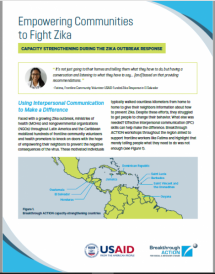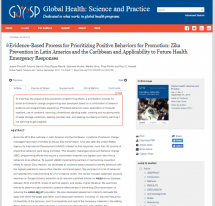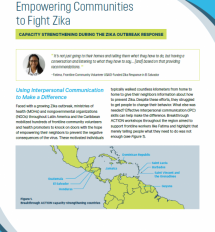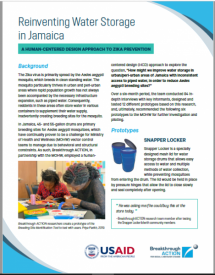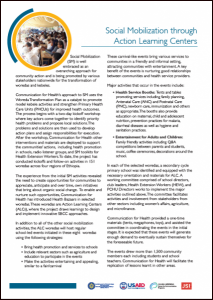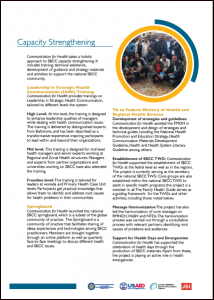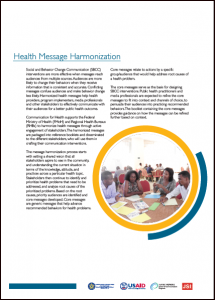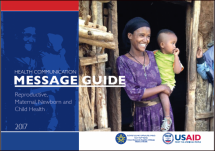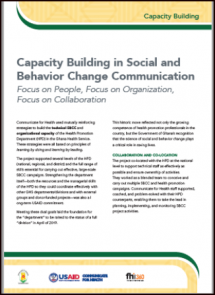Empowering Communities to Fight Zika: Capacity Strengthening During the Zika Outbreak Response
This success story outlines the role of Breakthrough ACTION’s capacity-strengthening activities as well as the importance of enhancing interpersonal communication skills of frontline workers to improve household uptake of Zika prevention behaviors.
Household visits by frontline community workers were a cornerstone activity in the USAID-funded Zika response, which provided a unique communication opportunity between families and community workers. This document also highlights several useful resources created under the Breakthrough ACTION project, including a job aid to support frontline workers, a training of trainers guide on interpersonal successes, and lessons learned for USAID and partners in future outbreak responses.
Source: Breakthrough ACTION/Johns Hopkins Center for Communication Programs
Date of Publication: April 13, 2020
SIMILIAR RESOURCES
Tools
Examples
- Social Behavior Change Programming for Public Health Emergencies: Lessons Learned from the USAID Zika Response in Latin America and the Caribbean
- Strengthening the USAID Zika Response: Experiences from the Zika Social and Behavior Change Working Group
- Behavior Prioritization to Improve SBC Programming During a Public Health Emergency: A Call To Action
- Lessons Learned for SBC Programming from the USAID Zika Response
- Technical Specifications Content Guide for Behaviors with High Potential to Prevent Zika
- The Importance of Social and Behavioral Change Response in the Zika Outbreak: Lessons Learned from Ebola
- Combating Zika: Social and Behavior Change Fact Sheet
- Using Digital Technology to Educate and Engage Youth in Fighting Zika
- Zika Virus Disease Outbreaks
- Systematic Literature Review on the Spread of Health-related Misinformation on Social Media
- Capacity Strengthening During the Zika Outbreak Response: Empowering Communities to Fight Zika
- Evidence-Based Prioritization Process to Identify Behaviors for Zika Prevention
- Programmatic Implications of Zika-Related Knowledge, Attitudes, and Practices
- Reinventing Water Storage in Jamaica: A Human-Centered Design Approach to Zika Prevention
- Perceptions About Zika-related Prevention Behaviors in the Dominican Republic: Findings and Implications from a Qualitative Study

